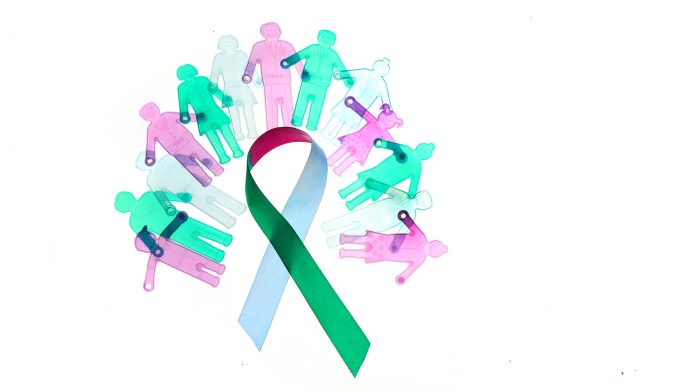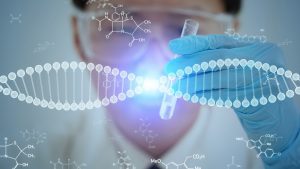
With no cure available for the majority of rare diseases, HEQ spoke to Dr David A. Pearce from the International Rare Diseases Research Consortium about the unmet needs in rare disease treatment and how innovative therapies could offer patients new hope.
A disease is classed as rare when fewer than one in 2,000 people are affected. Despite many rare diseases being considered chronic and even life-threatening, patients face a myriad of challenges when it comes to receiving accurate diagnosis and care, indeed many patients can go undiagnosed for years. It is now estimated that 300 million people around the world are living with a rare disease, and around 30 million are affected in Europe. In a bid to improve diagnostic tools and develop much-needed therapies, the European Commission launched a series of projects within its research and innovation framework and in February this year, it released a draft proposal for a Rare Diseases (RD) Partnership to better support people by developing a multi-stakeholder ecosystem to facilitate the development of new rare disease treatment and diagnostic pathways.
To find out more about the key challenges in the rare disease treatment and management, and the solutions that could help to mitigate these issues, HEQ spoke to the chair of the International Rare Diseases Research Consortium (IRDiRC) Consortium Assembly, Dr David A. Pearce.
What is the role of the IRDiRC within the wider care landscape?
IRDiRC is an international consortium with three main goals:
- All patients coming to medical attention with a suspected rare disease will be diagnosed within one year if their disorder is known in the medical literature; all currently undiagnosable individuals will enter a globally coordinated diagnostic and research pipeline
- 1000 new rare disease treatments will be approved, the majority of which will focus on diseases without approved options
- Methodologies will be developed to assess the impact of diagnoses and therapies on rare disease patients
Given these stated goals, we believe that IRDiRC will play a major role in ensuring that rare disease patients receive appropriate, and timely, care by fostering interactions between key stakeholders such as funding bodies, pharmaceutical companies, patient advocates, patients, caregivers, healthcare professionals, and researchers.
What are the key challenges currently facing rare disease treatment and management?
There are many challenges when it comes to rare diseases. The rarity of individual conditions often means that patients go undiagnosed, or misdiagnosed, for many years, resulting in a delay in patients receiving appropriate treatment. In addition, there is often a lack of knowledge related to rare conditions or the knowledge is locked away in geographically dispersed academic labs and hospitals which hinders progress in understanding the disease and developing new treatments. IRDiRC aims to address these issues by facilitating international, collaborative research with the aim of improving diagnostics and bringing new rare disease treatments to market, while also developing tools to measure the impact of diagnosis and therapies on rare disease patients. These tools will also help researchers to exchange information more easily, and to make more efficient use of existing information sources such as electronic medical records.
How has the EU Orphan Regulation introduced in 2000 helped to incentivise research and improve treatment options? What treatment gaps remain?
The EU Orphan Regulation was designed to stimulate the development of new rare disease treatments by offering incentives, mainly in the form of ‘market exclusivity’, to address the lack of interest that pharmaceutical companies had in developing treatments for such a small market. Although the EU Orphan Regulation is often hailed as a success, with exponential growth in the number of new treatments coming to market, it has also created challenges in access to these new treatments. The high cost of developing new rare disease treatments often results in high prices when those treatments come to market and access can be highly uneven across the EU due to national policies or patients’ ability to pay.
A EURORDIS survey released in February last year found that patients living with a rare disease have a worse healthcare experience on average than other patients affected by chronic diseases, what are some factors affecting this?
There are many reasons why a person with a rare disease may have a disproportionately negative healthcare experience compared to those affected by a chronic condition, particularly if that chronic condition is well understood. Often those with chronic conditions will receive a diagnosis very quickly after seeking care and, in most cases, there will be treatment options available. In addition, most healthcare providers have extensive experience and specialised training to manage patients with common chronic conditions, or they have access to resources to help them treat their patients. In the case of individuals with a rare disease, it can often take months or even years before a definitive diagnosis is made, if at all, and most healthcare providers will not have experience with the rare condition. Therefore, most rare disease patients will often feel more frustrated at the apparent lack of care as they, and their healthcare team, continue to search for a diagnosis or find innovative rare disease treatment. This is not a reflection of poor quality of care provided to rare disease patients by individual providers or healthcare organisations, but rather a larger issue related to a lack of resources available to those providers and organisations when confronted with patients whose case presentation might be very different to anything they have seen before.
Care for rare disease patients can be improved by increasing investments in research which is pivotal to advances in diagnostics as well as the development of new therapies. IRDiRC is well-positioned to facilitate the necessary dialogue between funding bodies, pharmaceutical companies, patient advocates, healthcare providers, and researchers by providing an international forum in which to encourage collaboration across borders, something that is essential in the fight to improve care for rare disease patients. Indeed, IRDiRC members are often at the forefront of these discussions and together, can influence change that is needed to drive investments and innovation in the rare disease arena. Together, we can make a difference in the lives of those touched by rare diseases.

The ability to take a virus and modify it to remove pathogenicity while allowing it to deliver human genetic material has advanced to the point where a small number of rare diseases have approved therapies using this technology.
How could digital or technological solutions help with the diagnosis and treatment of rare diseases?
One of the biggest challenges in rare diseases is the difficulty in accessing information that could play an important role in understanding disease, diagnosis, and treatment. Many factors contribute to this problem including a general dearth of knowledge/research on rare diseases, fragmented information scattered across the globe in research labs or patient records, incomplete or incorrect documentation in medical records, and a lack of appropriate tools for ‘data mining’ through large, complex electronic medical record systems. New technologies that could help address these issues include greater adoption of telehealth visits to provide access to experts across the globe as well as new technologies that could allow rare disease specialists to conduct clinical examinations remotely. As we transition into a digital world, there are opportunities to create global registries or knowledge bases for rare diseases that could be accessed easily by researchers and clinicians, with information coming from not only healthcare providers/organisations but perhaps even the patients or their families. Finally, advances in Machine Learning and Artificial Intelligence could provide new clinical decision support tools for diagnosis or allow researchers to identify previously unknown patients with rare diseases, gather information on patient outcomes, and generate new knowledge that can be used to develop new therapies for those diseases where none currently exists.
Are there any notable developments in the world of rare disease management that you think our readers should be more aware of?
There are two areas, one in basic research and one in clinical research, that I would highlight which would both have a significant impact on disease management.
The first thing to highlight is that in the world of research, gene therapy has finally come of age. The ability to take a virus and modify it to remove pathogenicity while allowing it to deliver human genetic material has advanced to the point where a small number of rare diseases have approved therapies using this technology. As with any new technology, the treatments that are now approved for RPE65-mediated retinal disease and spinal muscular atrophy (SMA), Luxturna and Zolgensma respectively, have set the path forwards for gene therapy. Importantly, once a new technology is approved for one disease, it becomes incrementally easier to get approval for other diseases. Therefore, in the upcoming years, we foresee a rapid increase in the number of clinical trials and approved treatments that utilise gene therapy for rare diseases. The benchwork that made this happen will now focus on improving these gene therapy platforms as well as investigating how these new technologies can be utilised for other diseases.
The second thing to highlight is the fact that the term ‘precision medicine’ is gaining much more attention in healthcare. Briefly, precision medicine which applies specific knowledge of one individual’s specific genetic makeup to treat disease, for example, cancer or prescription of the appropriate medications based on how they would be metabolised. This has huge implications, not only in rare disease treatment but also in the economics of how individuals are treated with such conditions. Thus, it does not get any more precise than targeting a genetic change that ultimately results in a rare disease.
Consequently, there is growing interest in understanding the pathogenic effect of genetic changes in rare diseases that are typically hard to diagnose and have complicated treatment regimens. Optimal diagnostics lead to optimal treatments and thus cost savings. This is fast becoming something that both providers and payers are beginning to understand. Medicine will learn from how this is applied to rare diseases.
As we come out of the COVID-19 pandemic, a huge amount of resources have been applied to understanding this virus, and much of those resources, technologies, and knowledge gained can ultimately be applied to benefit patients as we continue the fight against rare diseases.
Dr David A. Pearce
Chair
IRDiRC Consortium Assembly
irdirc.org
https://twitter.com/irdirc
This article is from issue 21 of Health Europa Quarterly. Click here to get your free subscription today.









